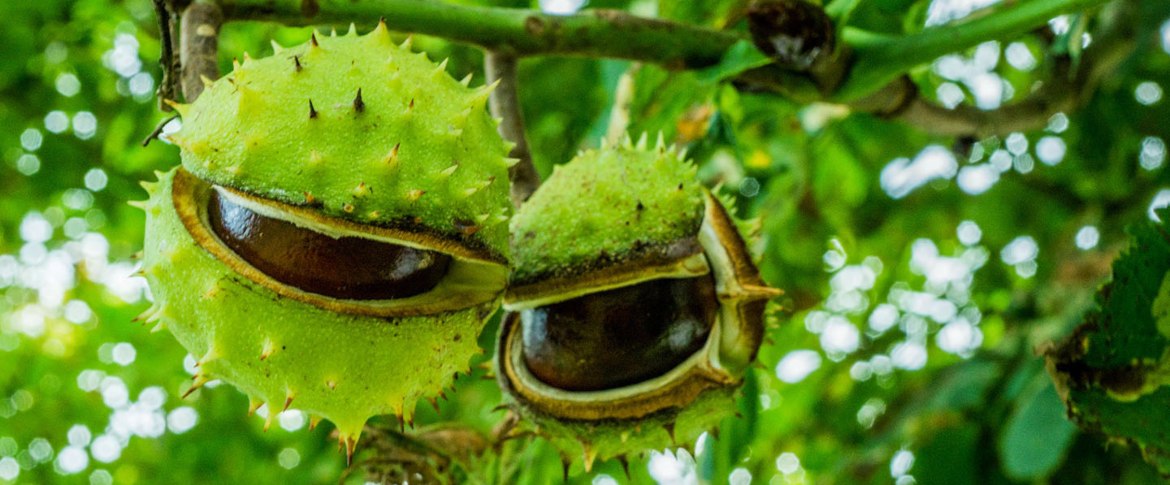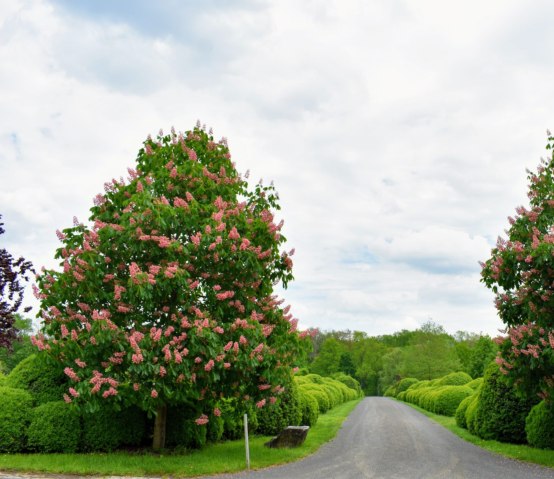The horse chestnut tree (Aesculus hippocastanum) is a magnificent specimen known for its awe-inspiring beauty and ecological significance. With its grand stature, vibrant blooms, and distinctive foliage, it captivates the hearts of nature enthusiasts and adds a touch of elegance to the Canadian and Ontario landscapes. In this comprehensive research article, we will take an in-depth look at the horse chestnut tree, exploring its features, characteristics, distribution, and cultural importance in the region. Let us embark on a journey to discover the wonders of this majestic tree.

Horse Chestnut Tree in Canada and Ontario
The horse chestnut tree, originally native to the Balkan Peninsula, found its way to Canada and Ontario in the early 19th century. Since then, it has become an integral part of the region’s natural heritage, adorning parks, gardens, and urban landscapes with its splendid presence. With its ability to adapt to the Canadian climate and its mesmerizing blooms, the horse chestnut tree has won the hearts of locals and visitors alike.
Horse Chestnut Tree Information: Features and Characteristics
The horse chestnut tree boasts several distinctive features that set it apart from other tree species. It stands tall, reaching heights of up to 25 meters, with a broad, dense crown that provides ample shade during the summer months. Its palmate leaves, composed of five to seven leaflets, create an enchanting display of greenery. During the fall, these leaves transform into shades of yellow and reddish-brown, painting a picturesque scene.
One of the horse chestnut tree’s most remarkable attributes is its captivating bloom. In the spring, the tree becomes adorned with clusters of exquisite white or pink flowers. Each flower consists of five petals with alluring nectar guides, which guide pollinators to the abundant nectar within. This spectacle attracts bees, butterflies, and other pollinators, making the horse chestnut tree a vital contributor to the local ecosystem.
The Horse Chestnut Tree in Bloom and Chestnut Blossom
The flowers of the horse chestnut tree are a sight to behold. These large, showy blooms create a stunning contrast against the tree’s lush green foliage. The petals range in colour from pure white to delicate shades of pink, often displaying eye-catching patterns and markings. The nectar guides, which resemble intricate trails leading to the nectar source, serve as beacons for pollinators seeking sustenance.
The horse chestnut tree undergoes a captivating bloom cycle that follows the rhythm of the seasons. As spring arrives, the dormant tree awakens, and its buds burst open to reveal the remarkable flowers. The blooming period typically lasts several weeks, providing ample time for admirers to witness the tree’s ethereal beauty. As the flowers fade, they give way to the development of spiky fruit capsules known as conkers, which contain the shiny brown seeds commonly known as horse chestnuts.
The Horse Chestnut Tree vs. Chestnut: Differences and Similarities
While the horse chestnut tree and the chestnut tree share similarities in their names and the production of nuts, they belong to distinct botanical families. The horse chestnut tree, belonging to the Sapindaceae family, produces nuts that are toxic to humans and animals. On the other hand, the chestnut tree, a member of the Fagaceae family, produces edible nuts enjoyed by many. It is essential to differentiate between these two trees to avoid any confusion regarding their uses and potential hazards.
How Horse Chestnut Trees Prepare for Winter
The winter season poses challenges for trees, including the horse chestnut. To withstand the harsh conditions, horse chestnut trees employ strategies to ensure their survival. As the colder months approach, the tree enters a state of dormancy. It sheds its leaves, conserves energy, and slows down its metabolic processes. This dormancy period allows the tree to protect itself from freezing temperatures and conserve vital resources until the arrival of spring signals the start of renewed growth.
Horse Chestnut Trees in Specific Locations
The horse chestnut tree has become a cherished part of Canada and Ontario’s natural landscapes. Its widespread cultivation as an ornamental tree has established its presence in parks, gardens, and urban areas throughout the region. From Victoria Park in London to High Park in Toronto, horse chestnut trees grace the surroundings, providing shade, beauty, and a connection to nature for both residents and visitors.
Buckeye Nut vs. Chestnut: Can You Tell the Difference?
The horse chestnut tree has a close relative, the Ohio buckeye tree (Aesculus glabra), which also thrives in Ontario and Alberta. Though these trees share some similarities, they possess distinct characteristics that set them apart. The Ohio buckeye tree is generally smaller, reaching heights of up to 15 meters, and its leaves consist of five leaflets compared to the horse chestnut’s seven leaflets. Furthermore, the Ohio buckeye produces inedible nuts called buckeyes, which may resemble chestnuts but are not true chestnuts. Differentiating between the two requires careful observation and knowledge of their distinguishing features.
Different Varieties of Horse Chestnut Trees
For those seeking a unique and enchanting addition to their landscape, the pink horse chestnut tree (Aesculus × carnea) offers a splendid choice. This cultivated hybrid variety, resulting from a cross between the red buckeye and the horse chestnut, exhibits vibrant pink flowers during the spring season. Nurseries and specialized tree suppliers provide opportunities for individuals to purchase and cultivate these captivating trees, infusing their surroundings with a touch of elegance and colour.
The American chestnut tree (Castanea dentata) once thrived in Ontario’s forests, but its population drastically declined due to the introduction of chestnut blight — a devastating fungal disease. The loss of this once-prominent tree led to concerted conservation efforts aimed at restoring the American chestnut’s presence in Ontario. Breeding programs focused on developing blight-resistant chestnut trees provide hope for the revival of this iconic species and the restoration of its ecological significance in the region.
The Aesthetics of Horse Chestnut
Flower & Horse in Spring: Capturing the Beauty of Blooming Horse Chestnut
The arrival of spring brings with it the breathtaking beauty of the horse chestnut tree in full bloom. Its resplendent flowers, ranging from delicate white to captivating shades of pink, create a magnificent sight against the backdrop of blue skies. Capturing the essence of this natural wonder through photography allows us to preserve and share its splendour with others. Whether it’s a close-up shot of the intricate flower petals or a panoramic view of a horse chestnut grove, the beauty of the tree in springtime never fails to inspire.
Bloom Beauty Ottawa: Encountering the Horse Chestnut in Urban Landscapes
Ottawa, the vibrant capital city of Canada, provides numerous opportunities to encounter the horse chestnut tree in urban landscapes. Its parks, such as Major’s Hill Park and Rideau Canal, are adorned with these majestic trees, creating picturesque scenes amidst the city’s hustle and bustle. Exploring Ottawa’s green spaces during the spring season offers residents and visitors a chance to immerse themselves in the splendour of blooming horse chestnuts and appreciate the harmonious blend of nature and urban life.
The horse chestnut tree holds a significant place in Canada and Ontario, both in terms of its ecological contributions and its cultural significance. Its towering presence, vibrant blooms, and unique characteristics make it a cherished part of the region’s natural heritage. Whether admired in urban landscapes, experienced in parks, or encountered in the wild, the horse chestnut tree continues to captivate and inspire with its timeless beauty.

FAQ
Where can you find horse chestnut trees in Canada and Ontario?
Horse chestnut trees can be found in various locations throughout Canada and Ontario, particularly in parks, gardens, and urban landscapes. They are commonly cultivated as ornamental trees and are known for their stunning blooms during the spring season.
What does the chestnut tree’s bloom look like?
The chestnut tree’s bloom consists of white or pink flowers arranged in panicles. Each flower has five petals with colourful markings known as nectar guides, which attract pollinators. The tree’s bloom is a spectacular sight during the spring season.
How can you distinguish a buckeye nut from a chestnut?
Distinguishing a buckeye nut from a chestnut can be challenging. However, buckeye nuts are generally larger, rounder, and lack the pointy tip found in chestnuts. It’s crucial to exercise caution and avoid consuming buckeye nuts, as they are toxic.
What is the pink horse chestnut tree, and where can it be bought?
The pink horse chestnut tree (Aesculus × carnea) is a cultivated hybrid variety known for its pink flowers. It can be purchased from nurseries and specialized tree suppliers that offer a wide range of ornamental trees.
Where can you see blooming horse chestnuts in Ottawa?
Blooming horse chestnuts can be observed in various parks and urban green spaces in Ottawa, such as Major’s Hill Park and Rideau Canal. Exploring these areas during the spring season offers an opportunity to witness the captivating beauty of the horse chestnut tree.
